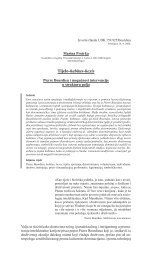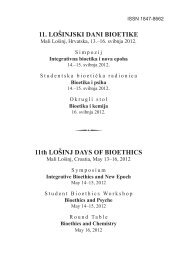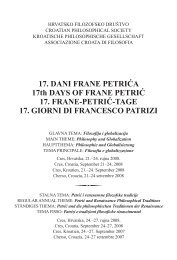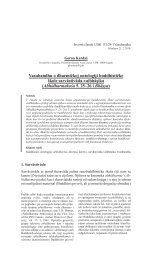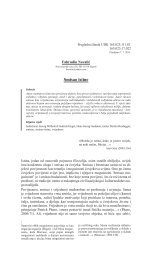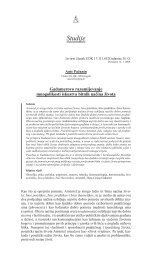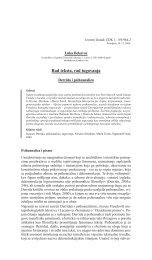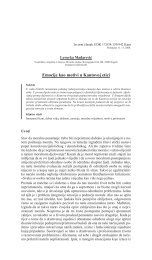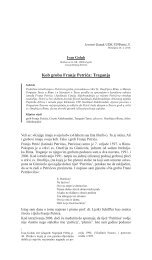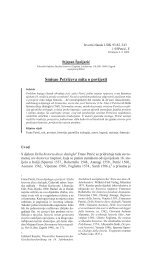10. Lošinjski dani bioetike - Hrvatsko filozofsko društvo
10. Lošinjski dani bioetike - Hrvatsko filozofsko društvo
10. Lošinjski dani bioetike - Hrvatsko filozofsko društvo
Create successful ePaper yourself
Turn your PDF publications into a flip-book with our unique Google optimized e-Paper software.
S jedne strane, neželjene reakcije postaju predmet diskusija u javnosti tek<br />
kada dođe do ozbiljnih posljedica (npr. povećana smrtnost od kardiovaskularnih<br />
bolesti zbog neadekvatne procjene sigurnosti koksiba), a s druge<br />
strane, nekritički se potencira opasnost od neželjenih reakcija, što može<br />
imati isto tako ozbiljne posljedice po zdravlje stanovništva (npr. vakcina<br />
protiv gripe). Postoje standardi u priopćavanju podataka o sigurnosti lijekova<br />
(akronim ABOUT), ali su podaci često kontradiktorni, a mogućnost<br />
zloupotrebe velika. Također, često se zanemaruje sigurnost biljnih preparata<br />
i lijekova koji se nabavljaju bez recepta.<br />
MARIJA TODOROVSKA<br />
Faculty of Philosophy, Ss. Cyril and Methodius University of Skopje,<br />
Macedonia /<br />
Filozofski fakultet, Sveučilište Sv. Ćirila i Metoda u Skopju, Makedonija<br />
THE “UNCANNY VALLEY” AND HUMAN IDENTITY<br />
Several aspects of the somewhat troubling development of robotics<br />
and its perception will be put to examination in the article, starting from the<br />
concept of the “uncanny” in Ernst Jentsch and Sigmund Freud, through the<br />
potential plausibility of the “uncanny valley” hypothesis, to the problem of<br />
human identity. The “uncanny valley” problem will be explored through<br />
some cognitive and axiological accounts in order to show its importance in<br />
the bioethical discourse. The issues of endangerment of the human identity<br />
will be analyzed through the concept of preservation of human uniqueness<br />
on two levels: 1. the development of robotics and its implications on the<br />
perception of “human” in practice, theory and pop culture; 2. the development<br />
of the willing refusal of uniqueness and/or of human characteristics<br />
through the “kigurumi”, specifically the “animegao” and “ulzzang”; in the<br />
light of the contemporary ideas of physical soundness and beauty and the<br />
ways to obtain them as well as the existence of computer generated humans<br />
in arts and media.<br />
140



